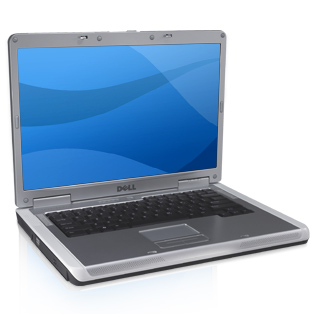
Most people use the terms notebook and laptop computer interchangably. Once it's not sitting on top of your desk every portable computer instantly becomes a notebook or laptop regardless of its configuration or individual specification. There are, however, some very big differences between notebook and laptop computers and it's important that you're aware of these differences during the buying process.
This article is being written on a laptop computer as a matter of coincidence but let's get to the meat of the article and explain the basic differences that you need to be aware of.
Let's look at the notebook computer first.
The Notebook Computer
A standard notebook has the following features:
1. Smallest possible keyboard that retains functionality.
2. No internal floppy drive.
3. No internal DVD or CD system.
4. 12" - 14" TFT screen.
5. 4 - 5 hour battery life.
6. Ultralight. Less weight is better.
7. Minimal graphics subsystem.
8. Low profile (thin).
9. Integrated modem and network connection.
10. Low power consumption Celeron/Centrino or Sempron style processor.
In essence a notebook computer is designed to provide mobile computing that won't break your back yet still offer all the power the mobile users requires for work and some leisure pursuits. This portability normally comes at a price. The level of minituarization involved comes at a cost and high end notebooks can prove to be quite expensive.
The Laptop Computer
Now for the laptop computer. Again look at the name. A laptop is designed to sit on your lap and you can therefore expect it to be quite large and loaded down with features and power. The
The standard laptop computer would have some ,if not all, of the following features:
1. 14" - 17" (widescreen) TFT screen.
2. Integrated modem, network, Bluetooth and Wi-Fi capabilities.
3. High quality integrate audio and speaker system.
4. Internal DVD-ROM or DVD-RW drive
5. Large full featured keyboard.
6. 3 hour+ battery life.
7. Nvidia GeForce or ATI Radeon graphics subsystem.
8. Upgradeable.
9. Low power consumption, high performance Intel Centrino style processor.
From reading the above information you'll see that the notebook is the exact opposite of the laptop. Notebooks offer reasonable power and extreme portability. Laptops are designed to be capable of replacing an entire desktop PC if necessary whilst still offering desktop performance in a mobile platform. Hopefully this article has helped clear up the differences between both classes of portable computers. As time and technology moves on the line between laptop and notebook will continue to blur but for right now it's still clearly defined and driven by the demands of the portable computer market.
File Under : difference between laptop and notebook
